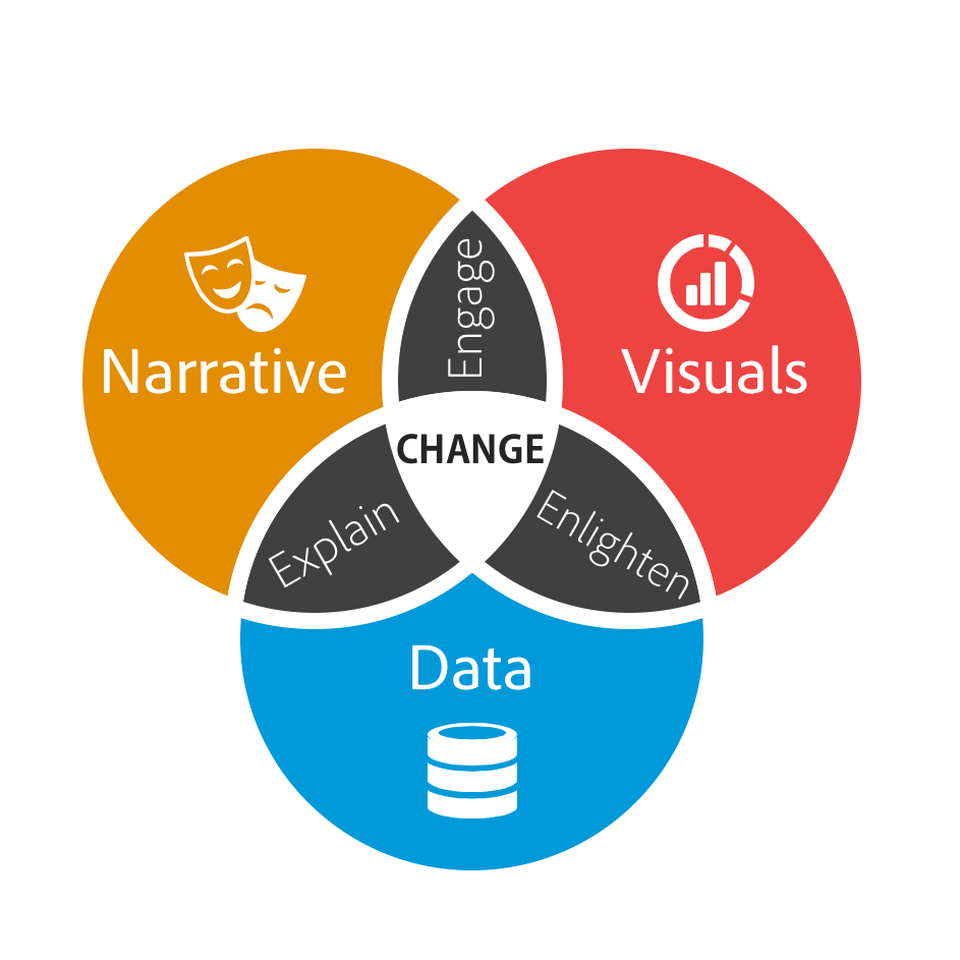Analytics Blog

Why Data Storytelling is Essential to Strategic Business Cases
I was recently listening to some executive leaders talk about how they love getting ideas from their employees to identify new opportunities. They would sift and filter through the various ideas to find the good ones that may eventually lead to some big wins. At the beginning of my career, I remember hearing the same sentiment from my management. I would come up with ideas all day and happily fill every suggestion box.
And I bet every single one of them was a dud.
Not because they were bad ideas, but because I never backed them up with a meaningful and strategic business case. Without supporting evidence, I failed to justify why they were actually good ideas.
Thankfully, over time, I have learned the important role that data and narrative play in influencing decision makers. In one business case I delivered, the executive sponsor found my argument so compelling that she eventually deemed it a “no regret” investment. To me, this is the highest compliment any business case can get.
What Executives Really Want to See
While executives will continue to ask for your ideas, what they really need is a strategic business case to justify why your idea is worthy of their attention. In other words, what is the return the business will receive from making the investment in your idea? There are lots of ideas competing for investment. Thus, they need your business cases to help them decide, which ideas best align with their strategic priorities.
But I want to share a bit of wisdom I have gained. Do not start with the big idea.
Yes, that is correct, do not lead with your idea. If a movie trailer revealed the conclusion of a movie, would you still go out and watch it? Your excitement will be dampened if you already know the ending. We, as humans, love having stories roll through our hearts and minds and eventually come to a resolution. The most successful, admired movies tend to also be the ones that make us emotionally connect with the story. It is no secret there are numerous powerful formulas in the movie world, and some of those same techniques can be applied to influencing business leaders to invest in your idea.
Don’t lead with your idea. If a movie trailer revealed the conclusion of a movie, would you still go out and watch it? Click & Tweet!
How a Strategic Business Case Can Influence Leaders

For the “no regret” business case that I mentioned earlier, I was fortunate my executive had tremendous empathy for what our customers were experiencing. She was eager to understand the online purchase experience before making any investment decisions. I was excited and nervous. I wasn’t sure if I could clearly communicate the customer pain point as well as the solution to solve it.
I realized I needed to start by giving her enough context into the situation. Then, I carefully led her through how the experience was creating pain for our customers. I showed her how much time they wasted across their journey. I highlighted the frustration they felt when they got a surprise phone call from customer service. And most importantly, I emphasized to her how frequently this was happening across our line of business. With this richer perspective, she was able to see the real impact it had on the business. She could fully appreciate the cost, time, and effort we dedicated to supporting a clearly broken purchase experience.
Next, I shared how we could solve it. The idea was not completely novel. In fact, it was widely supported by the Finance team that had already completed a detailed return on investment (ROI) analysis. In addition, it was clear what was right for the customer would also be right for the business. This leader trusted the team’s recommendations and gave us the green light. With only six months of development, we completely solved the customer pain point and delivered tremendous value across the organization.
Data storytelling completely solved the customer pain point and delivered tremendous value across the organization. Click & Tweet!
While the ROI on its own was significant, I don’t believe it would’ve been funded without carefully detailing the customer experience first. The data story I delivered made an emotional connection with the decision maker, and thus, the idea (emotion) and business case (logic) were balanced in her mind and became a “no regret” decision.
How to Build a Business Case with Data Storytelling
As you consider how to write a business case, here’s a recommended approach to infuse it with more data storytelling before you share the idea.
1. Establish Context
 Begin writing a business case by sharing the full context of the situation. Intimately explain what is happening to the customer using data, narrative, and visuals. Develop a story around how the audience is impacted. Be it a customer pain, a broken process, or even a huge gap to fill. Your goal is to build empathy between your audience and their users. Deliver a data story that makes them feel the joy or pain their users are feeling.
Begin writing a business case by sharing the full context of the situation. Intimately explain what is happening to the customer using data, narrative, and visuals. Develop a story around how the audience is impacted. Be it a customer pain, a broken process, or even a huge gap to fill. Your goal is to build empathy between your audience and their users. Deliver a data story that makes them feel the joy or pain their users are feeling.
2. Explore Options
Examine with your audience how the issue could be addressed. What would they want to see happen? Let them consider their ideas for resolving the issue. Even openly ask how they think it could be fixed.
3. Pitch Your Idea
Now you bring forward your idea – a budding solution that needs their support to become a reality. Explain it in a balanced manner by sharing both its challenges and opportunities. Using data, project how this new concept solves their customer problems, fixes the broken process, or takes advantage of the new opportunity.
4. Back it Up with Business Value
Finally, you need to justify why the idea is good. What meaningful impact will it have on the business? What will it take to solve, and how will you measure its success in terms of business outcomes? For example, will it increase revenue, improve customer lifetime value, or reduce re-work? These details become the rational reasoning that supports the emotional aspects covered in the data story. You want to clearly demonstrate you have thought about how to put the insight into action.
Speaking to the Heart Can Open the Mind
As I reflect on the numerous strategic business cases I have delivered over the years, I can now see a clear pattern across my most powerful and successful business cases. They often featured a much richer level of insights that connected to my audience’s emotions — they weren’t just a series of fragmented data points trying to support shallow recommendations.
By leading with a data story, I dramatically reduced the mental friction for my audience to really see and understand what was happening. After I connected with their hearts, I was then able to speak to their minds more effectively. My ideas were no longer my own, but theirs. At that point, I could invite the decision makers to help draft the next chapter of the story by investing in the idea. As you begin to infuse more of your strategic business cases with data stories, I guarantee you will see more of your ideas being embraced and put into motion.








